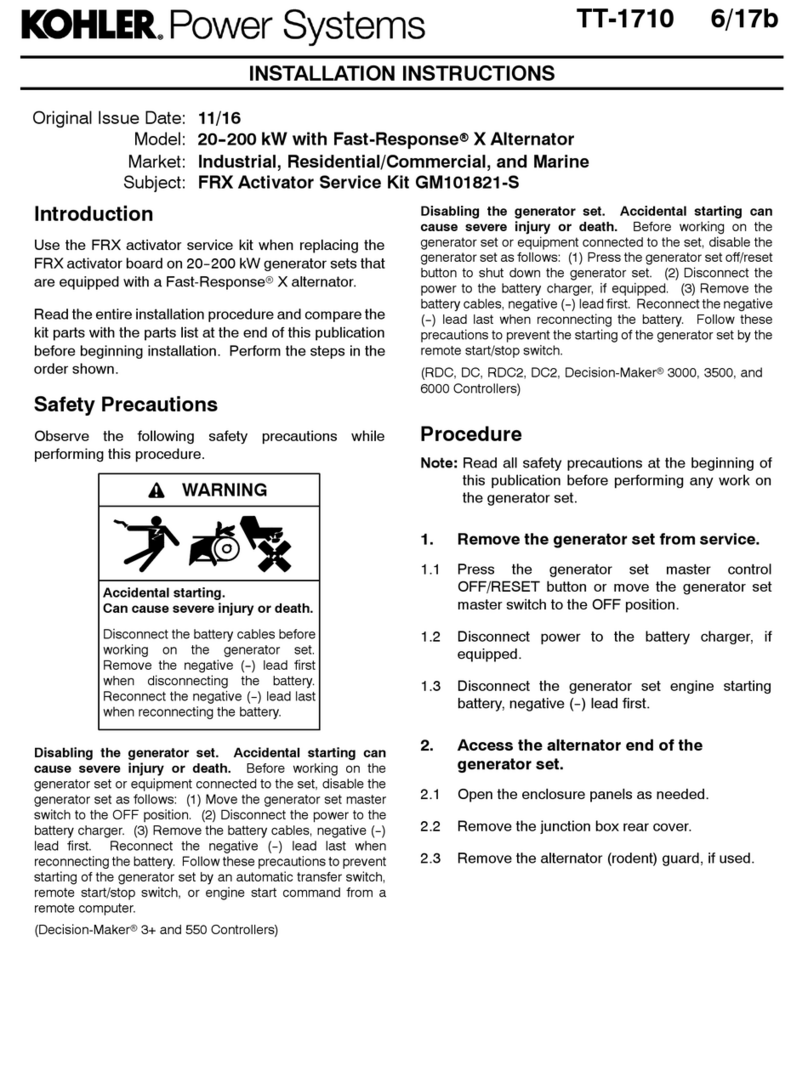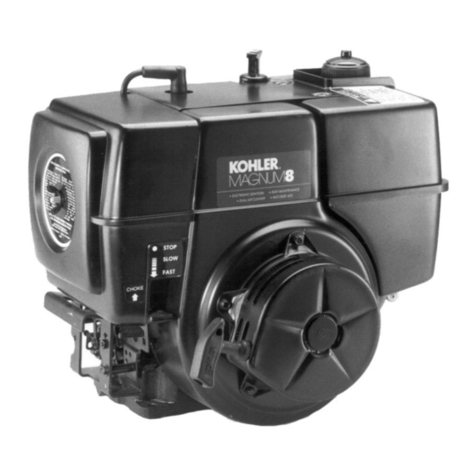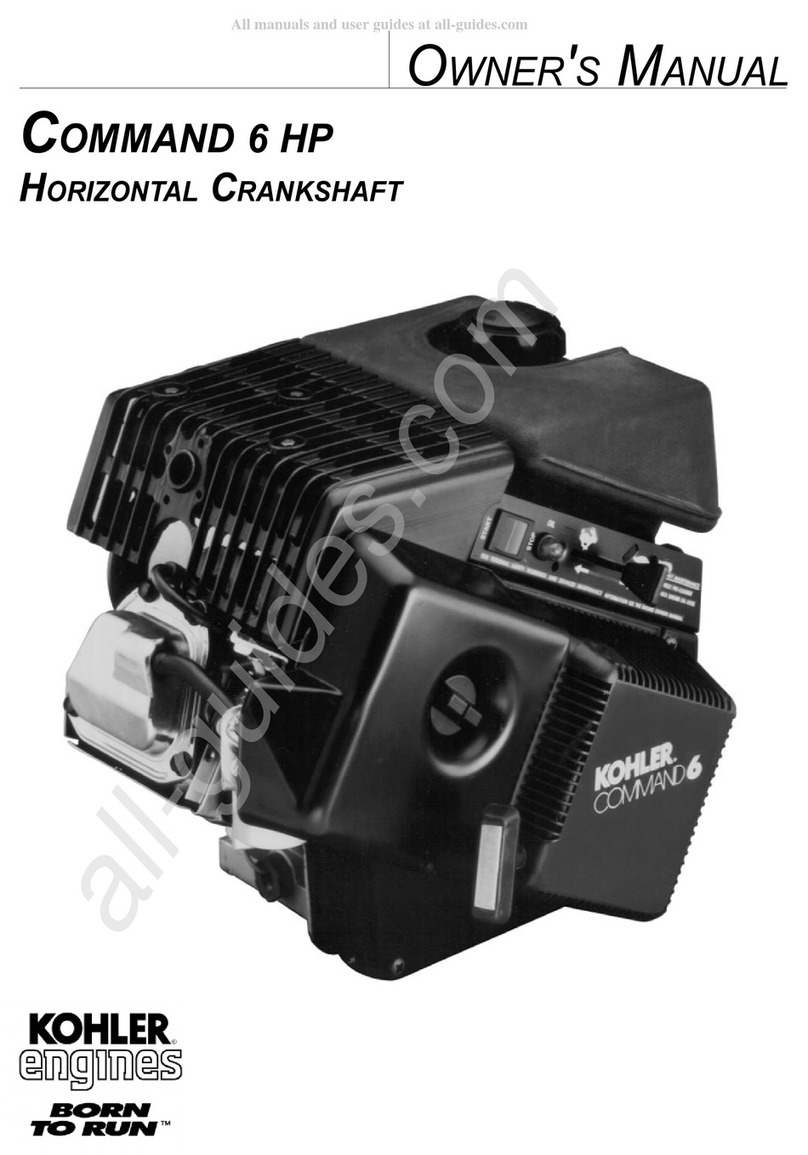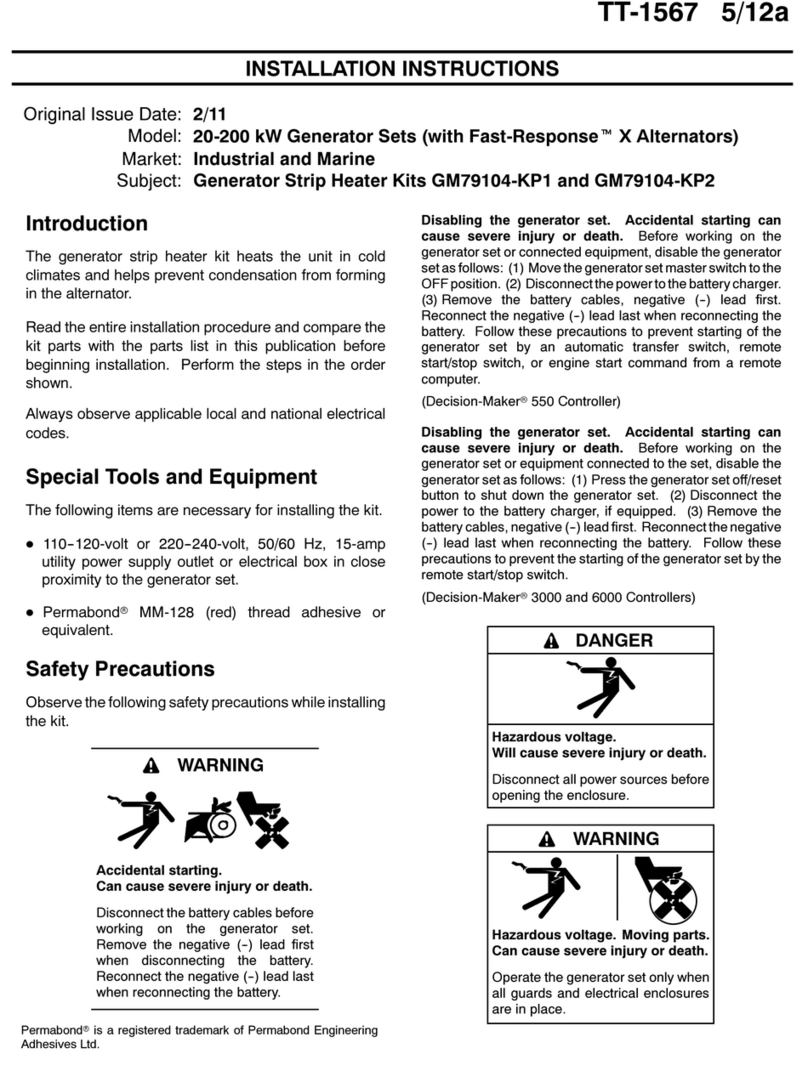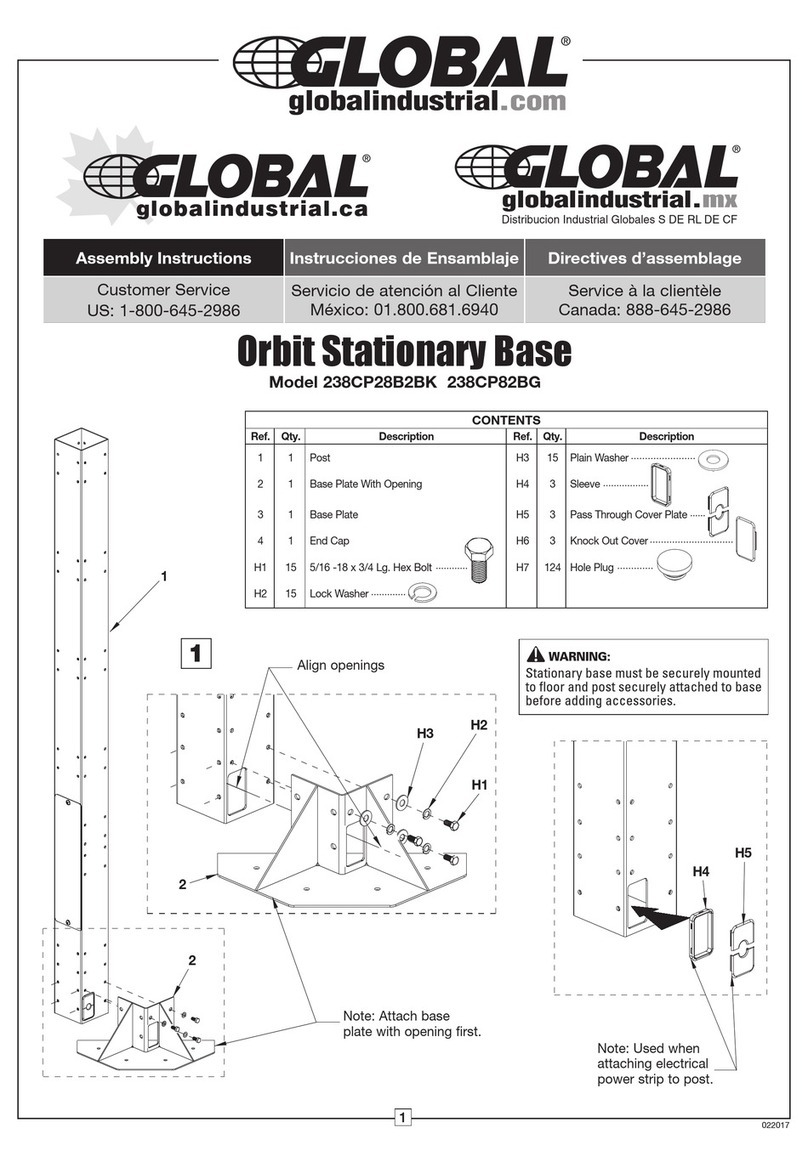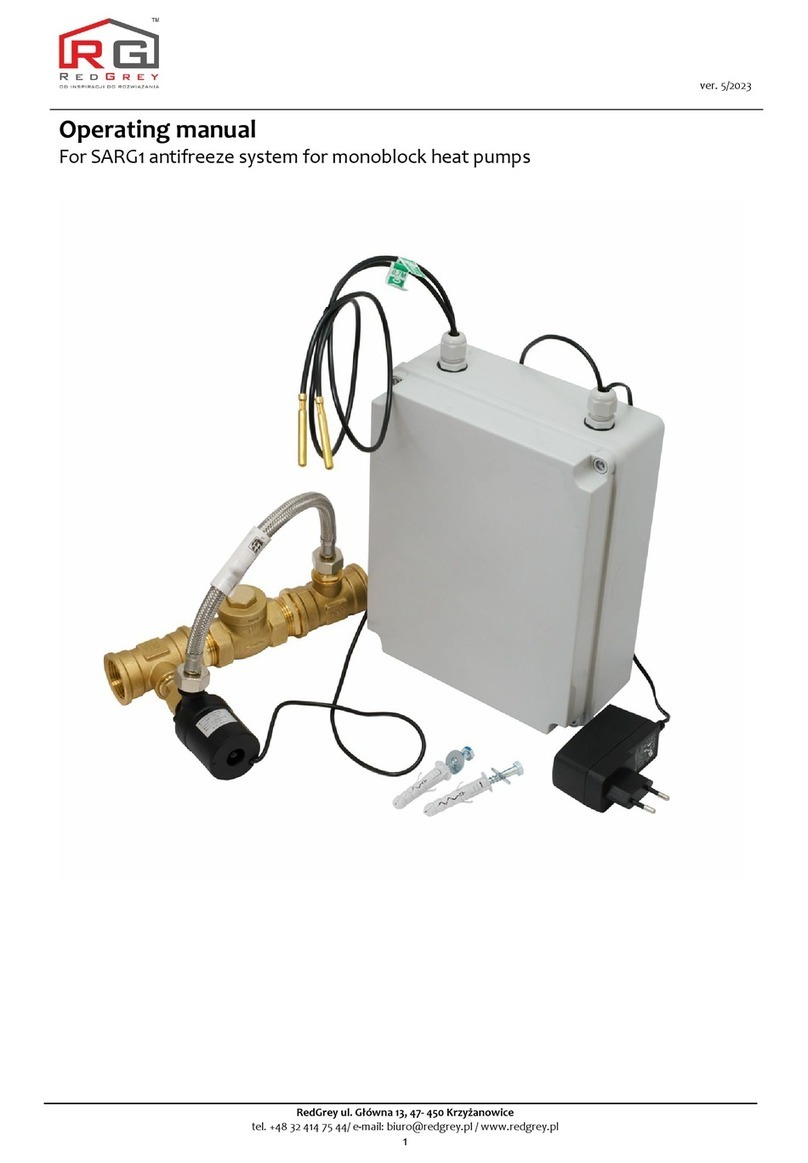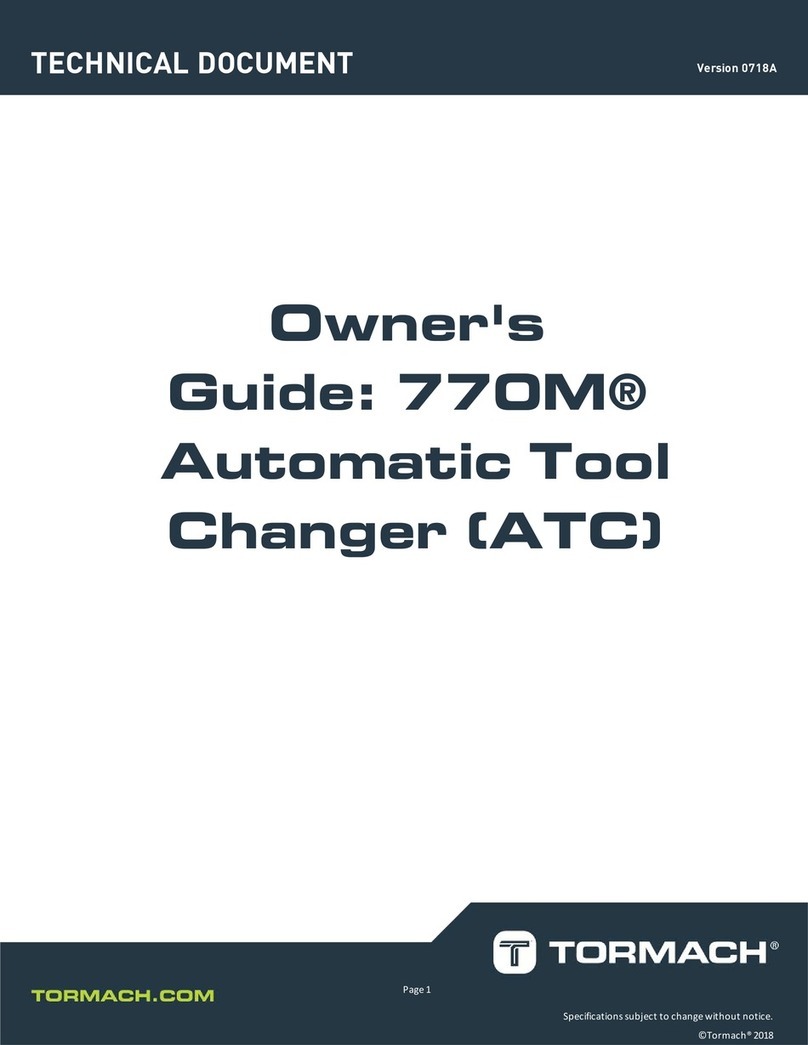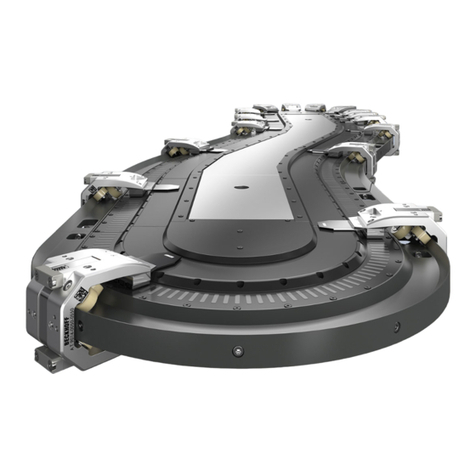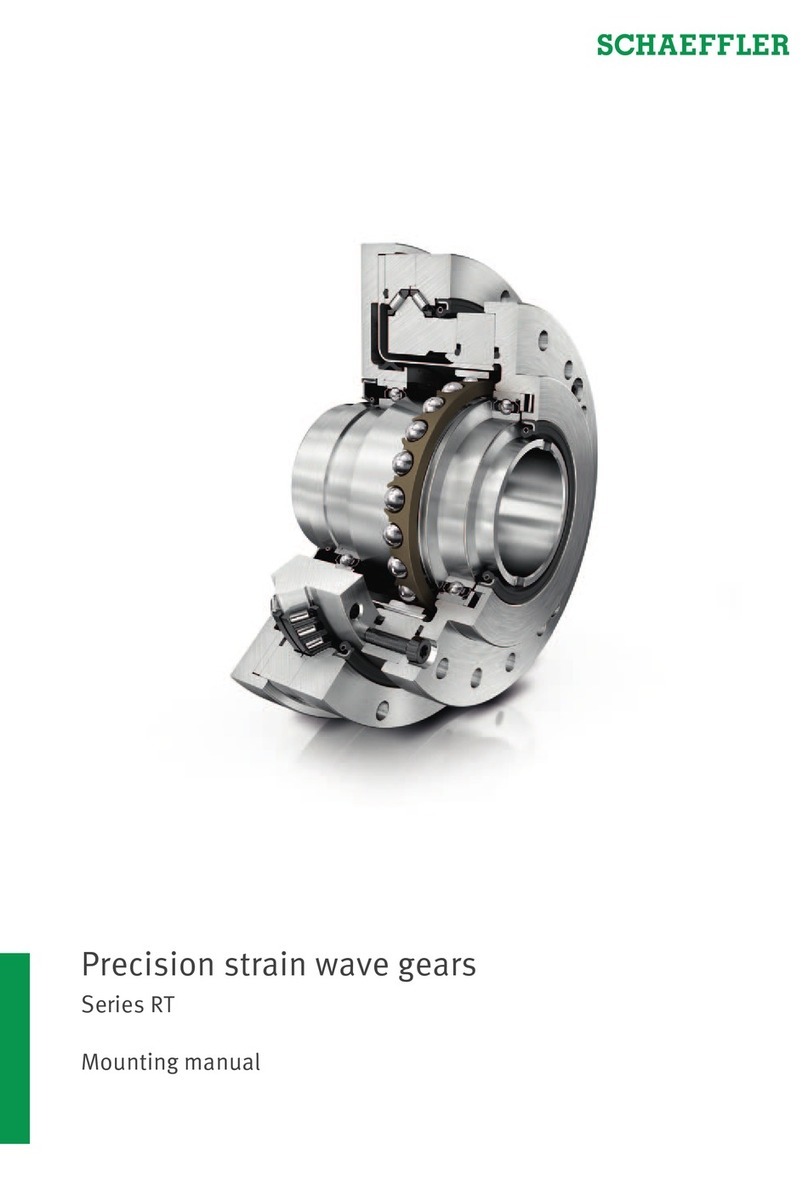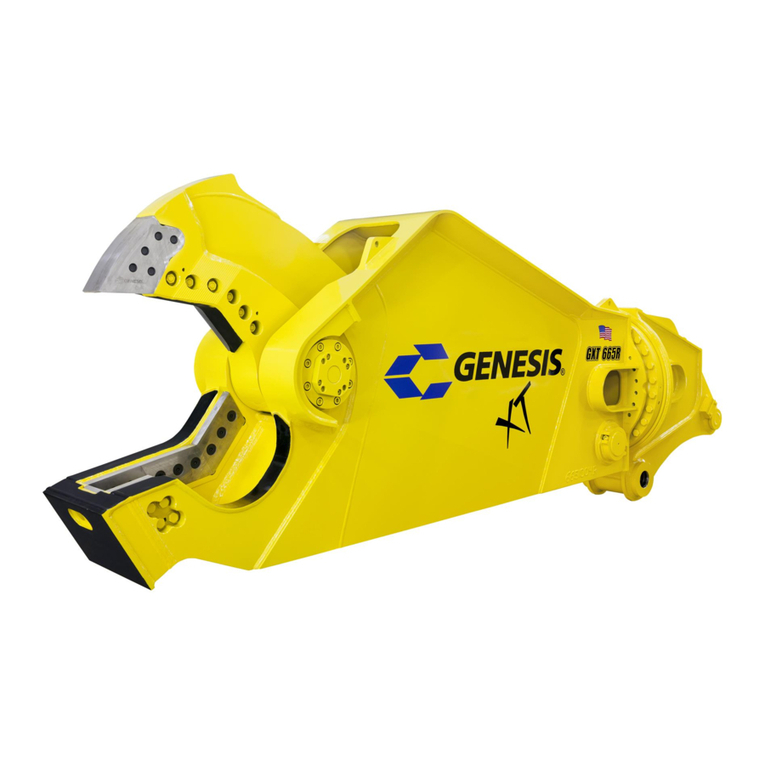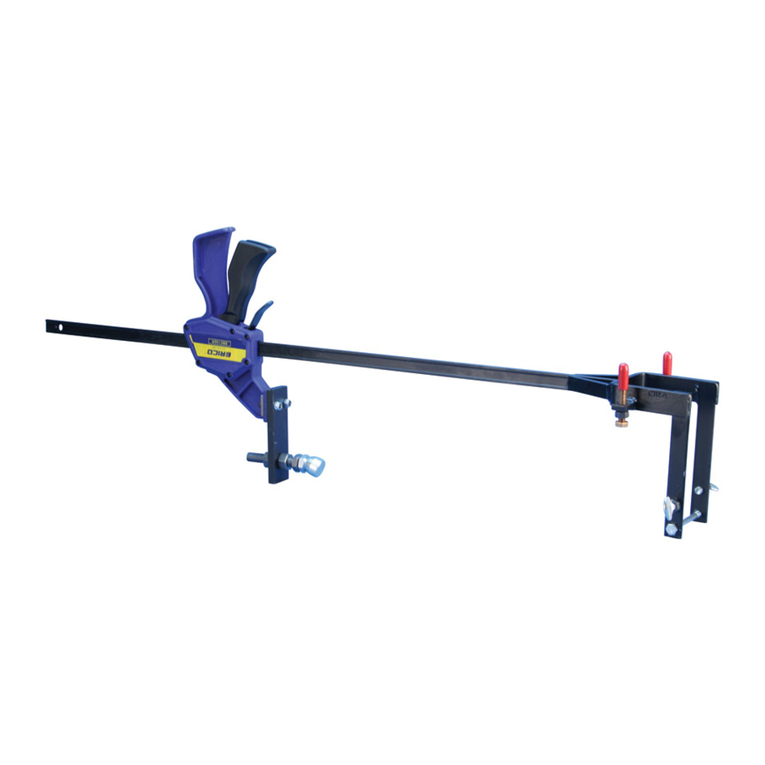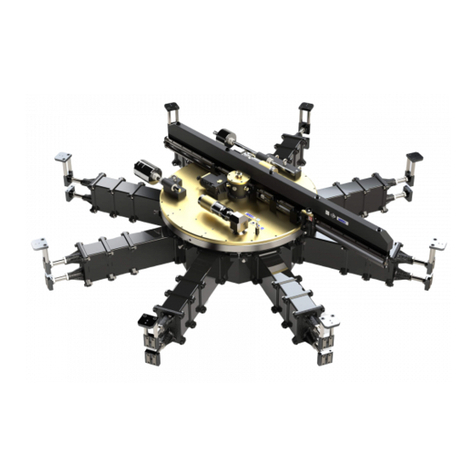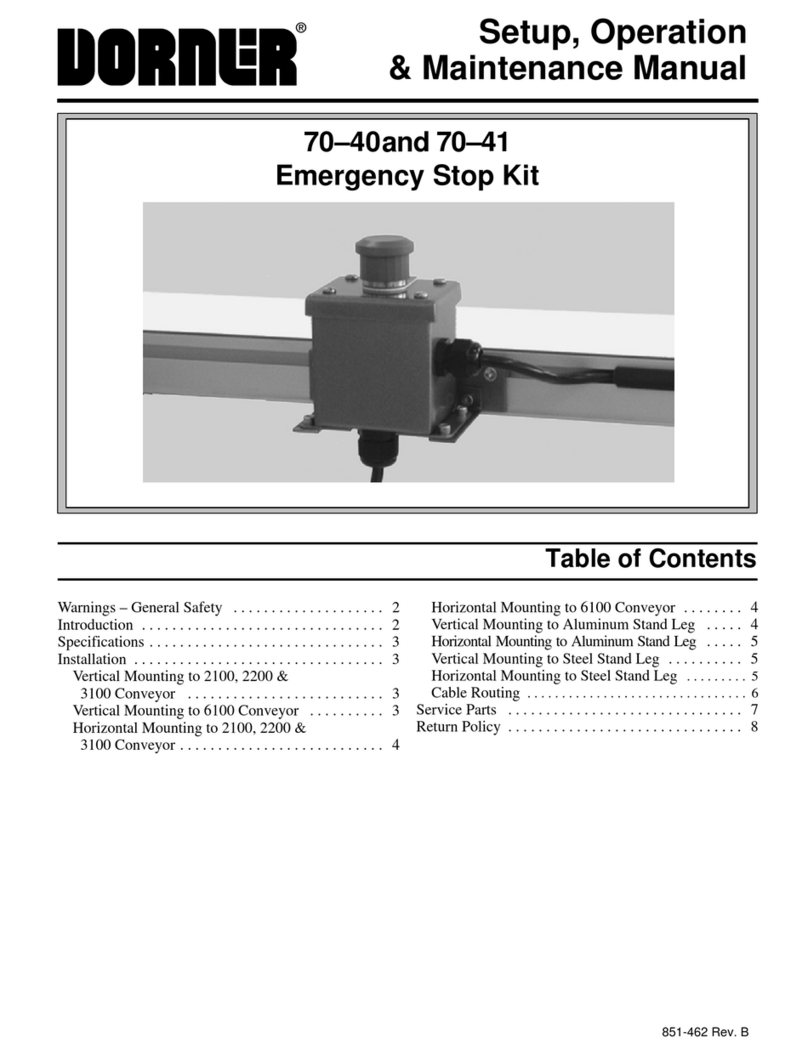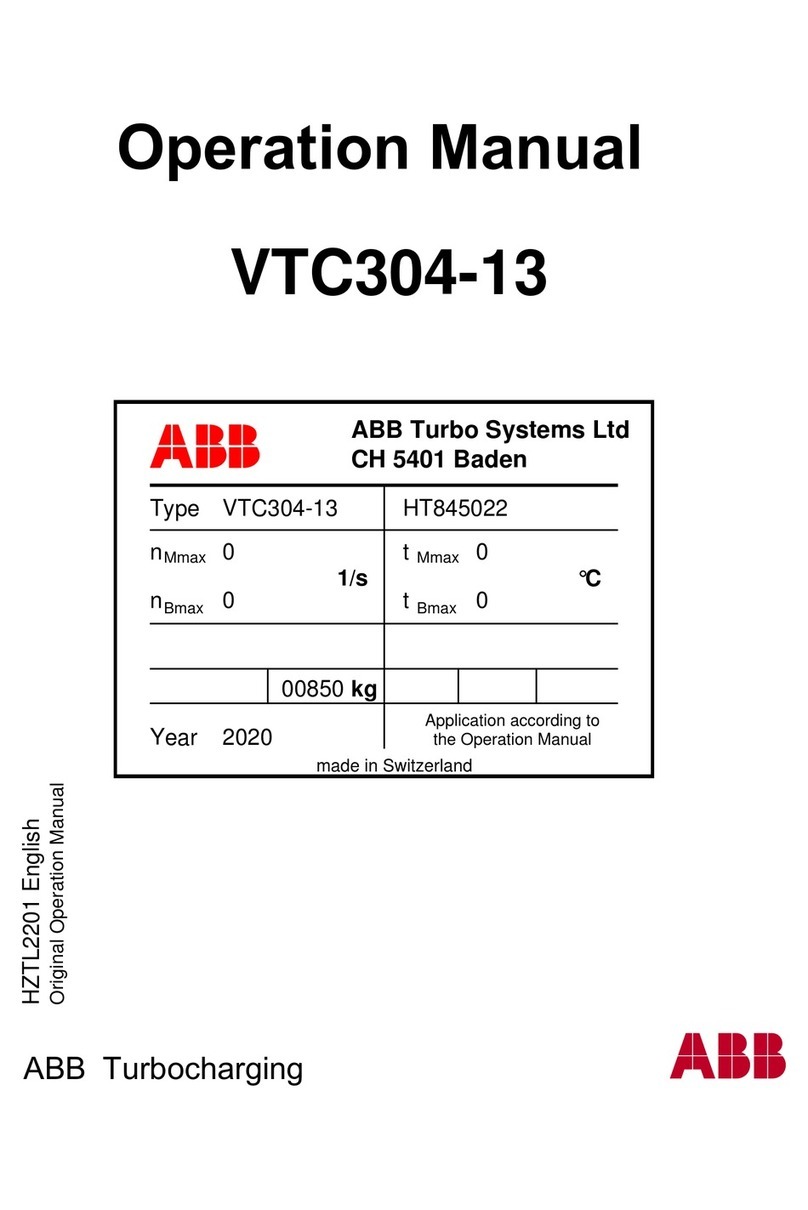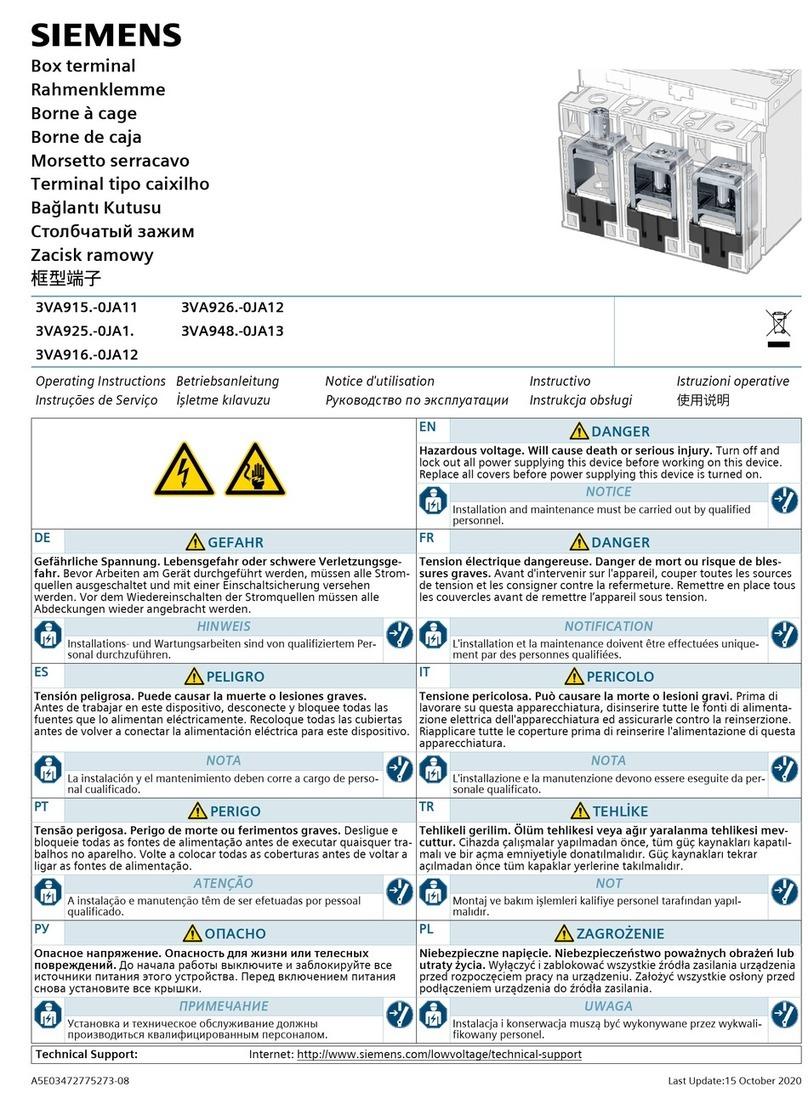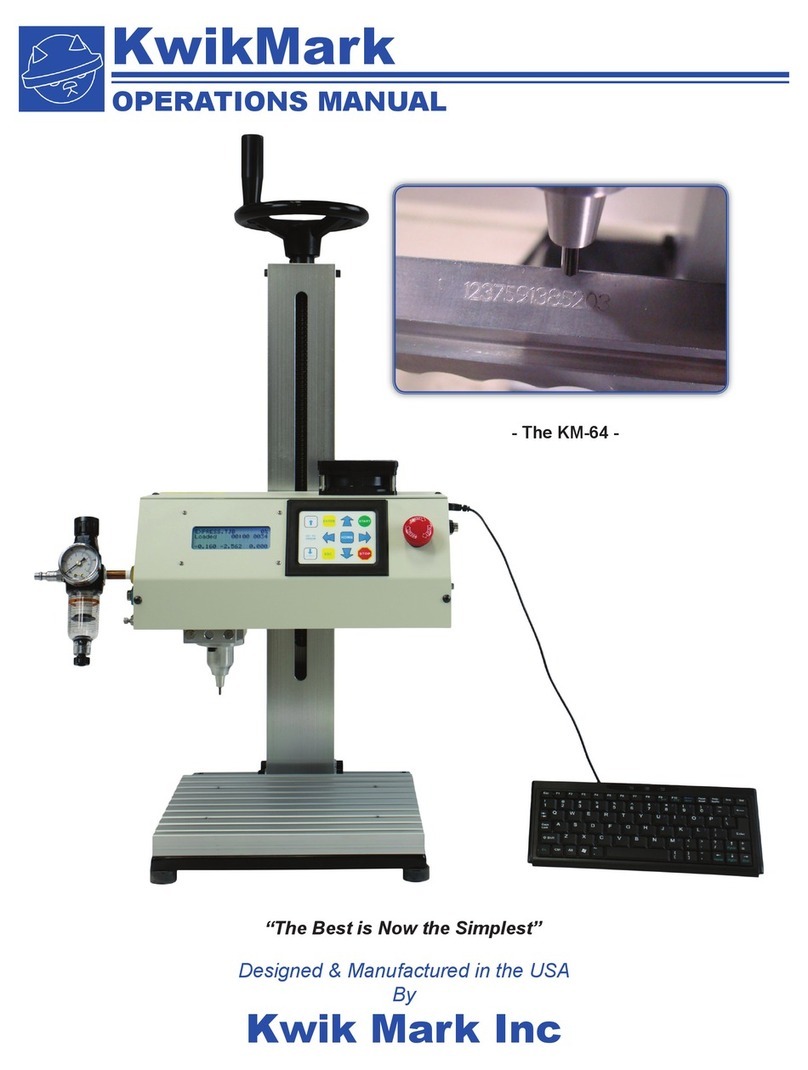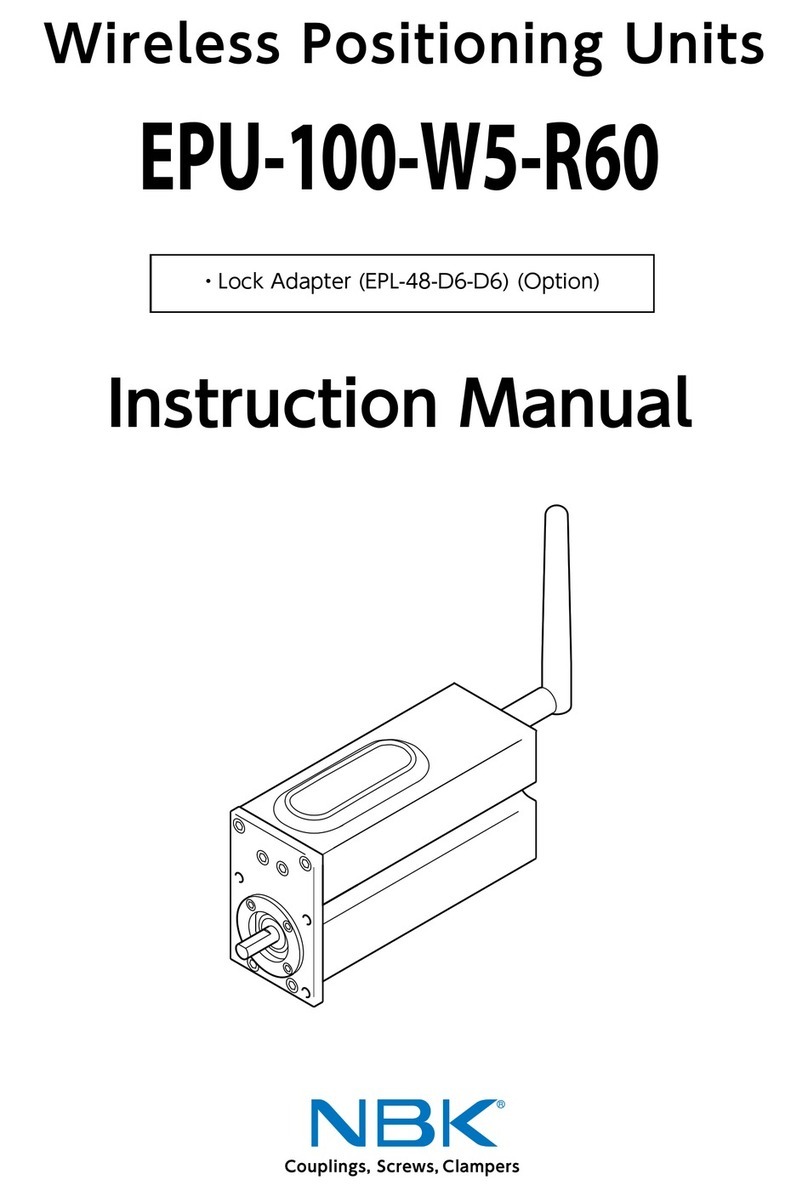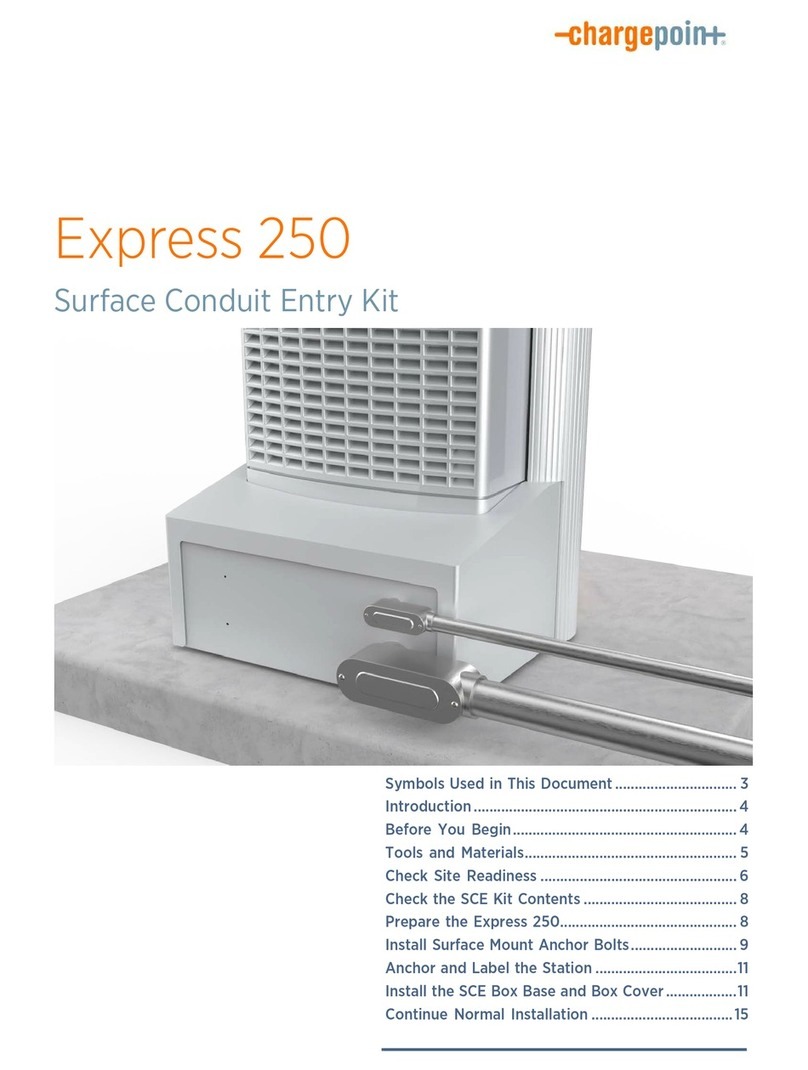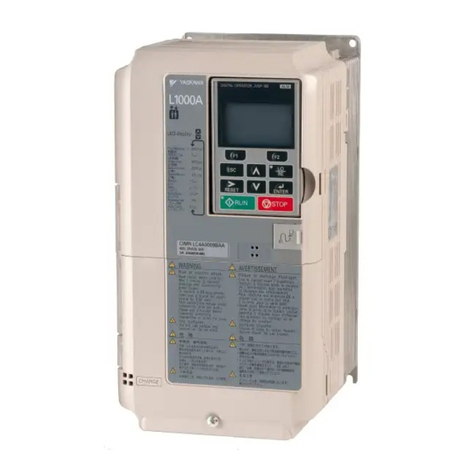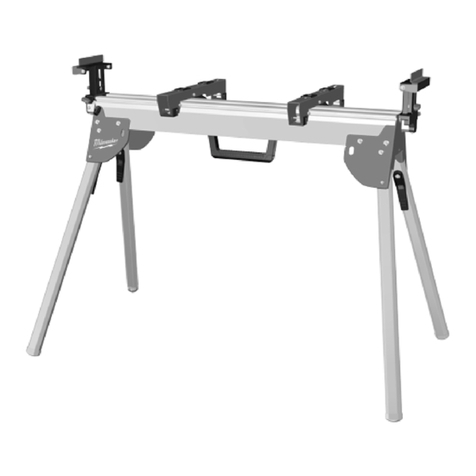Kohler TP-5353 User manual

Industrial Generator Sets
Models:
20-300 kW
TP-5353 8/94c
Service

TP-5353 8/94 Table of Contents
Table of Contents
SUBJECT PAGE SUBJECT PAGE
Safety Precautions and Instructions I.......
Introduction i.............................
Service Assistance i.......................
Section 1. Specifications 1-1.................
Introduction 1-1...............................
Fast-ResponseäII Concepts 1-1...............
Short Circuit Performance 1-1..................
Specifications 1-3.............................
Generator 1-3...............................
Engine 1-5..................................
Accessories 1-6..............................
Section 2. Operation 2-1.....................
Prestart Checklist 2-1.........................
Exercising the Generator Set 2-1...............
16-Light Controller (Level 1) Operation 2-2.......
Features 2-3................................
Starting 2-6.................................
Stopping 2-6................................
Resetting Emergency Stop Switches 2-7........
Fault Shutdowns 2-8.........................
Controller Resetting Procedure (Following
Fault Shutdown) 2-9........................
6-Light Controller (Level 2) Operation 2-10........
Features 2-11................................
Starting 2-13.................................
Stopping 2-14................................
Resetting Emergency Stop Switches 2-14........
Fault Shutdowns 2-15.........................
Controller Resetting Procedure (Following
Fault Shutdown) 2-15........................
Paralleling Engine Gauge Box Controller
Operation (Switchgear) 2-16...................
Features 2-17................................
Manual Controller Operation 2-18................
Features 2-19................................
Starting 2-19.................................
Stopping 2-20................................
Fault Shutdowns 2-20.........................
Section 3. Scheduled Maintenance 3-1........
Oil Requirements (30, 80, and100 kW Ford
Powered) 3-2...............................
Oil Change Procedure (30, 80, and100 kW Ford
Powered) 3-2...............................
Turbocharger Service Schedule (30, 80, and
100 kW Ford Powered) 3-3...................
Storage Procedure 3-3........................
Section 4. General Troubleshooting 4-1.......
General Troubleshooting Chart 4-1..............
Section 5. Controller Troubleshooting 5-1.....
Microprocessor Controller—Description 5-1......
Circuit Board Terminal Identification (TB1) 5-3...
Fault Shutdowns—Microprocessor
Controller 5-9..............................
Paralleling Engine Gauge Box Controller
(Switchgear) 5-11............................
Speed Switch Adjustments 5-11.................
Manual Controller 5-12.........................
Starting 5-12.................................
Running 5-12.................................
Stopping 5-12................................
Engine Safety Shutdown Switches 5-13..........
Section 6. Generator/Controller
Troubleshooting 6-1........................
Microprocessor Controller 6-1..................
Relay Descriptions 6-1........................
Troubleshooting Microprocessor Controller 6-2...
Fuses 6-3.................................
Engine Will Not Crank 6-4...................
Engine Cranks, But Will Not Start 6-5.........
Controller Instrumentation 6-6...............
Lamp Circuit Board 6-7.....................
Overcrank Lamp 6-8.......................
FASTCHECKâFeatures and Operation 6-9.....
Features 6-9..............................
Operation 6-10.............................
Manual Controller 6-14.........................
Troubleshooting Manual Controller 6-15..........
Section 7. Component Testing and
Adjustment 7-1.............................
Generator Troubleshooting 7-1.................
Troubleshooting Generator—No Output
Voltage 7-2................................
Troubleshooting Generator—High Output
Voltage 7-3................................
Generator Testing 7-4.........................
No Output On Any Phase 7-4..................
Overvoltage 7-6..............................
Fluctuating Voltage 7-6.......................
LED Circuit Board Test 7-7.....................
SCR Assembly and Photo Transistor Board 7-9...
Automatic Voltage Regulator (AVR) Operation
and Adjustment 7-12..........................
To Test AVR 7-13.............................

TP-5353 8/94Table of Contents
SUBJECT PAGE SUBJECT PAGE
Stator 7-14....................................
Generator Field 7-15...........................
Exciter Armature 7-16..........................
End Bracket Removal and Replacement 7-17......
Speed Sensor Test 7-18........................
Air Damper Switch Adjustment 7-19..............
Overspeed/Time Delay Circuit Board 7-20.........
Overvoltage Circuit Board 7-21..................
Governor Adjustment 7-22......................
Mechanical Governor—Hoof
20-100 kW Ford-Powered Models 7-22.........
Mechanical Governor—Stanadyne
20-100 kW John Deere-Powered and
20-100 kW Detroit Diesel-Powered
Models 7-23................................
Mechanical Governor—Nippondenso
125-180 kW John Deere-Powered
Models 7-24................................
Mechanical Governor—Bosch P
125-180 kW Detroit Diesel-Powered
Models 7-25................................
Electronic Governor—Barber-Colman
Dyna 2500
20-100 kW Ford-Powered Models 7-26.........
Electronic Governor—Barber-Colman
Dyna 8000
125-300 kW Detroit Diesel-Powered Models
(Early 20-100 kW John Deere-Powered and
Early 20-100 kW Detroit Diesel-Powered
Models) 7-27................................
Electronic Governor—Barber-Colman
Dyna 2500
125-180 kW John Deere-Powered Models 7-29..
Electronic Governor—Barber-Colman
Dyna 70025 using Stanadyne D Series
Injection Pump
20-100 kW John Deere-Powered and
20-100 kW Detroit Diesel-Powered Models 7-31.
Section 8. Generator Disassembly/
Reassembly 8-1............................
Disassembly 8-4..............................
Reassembly 8-7..............................
Section 9. Generator Reconnection 9-1.......
Voltage Reconnection Procedure 9-1............
Generator Frequency Change and Adjustment 9-4
Frequency Change 9-4.......................
Frequency Adjustment 9-4....................
Appendix A. Glossary of Abbreviations A-1...
Appendix B. Common Hardware
Application Guidelines B-1..................
Appendix C. Common Hardware
Identification C-1...........................
Appendix D. General Torque
Specifications D-1..........................

TP-5353 8/94 Safety Precautions and Instructions I
Safety Precautions and Instructions
A generator set, like any other electromechanical
device, can pose potential dangers to life and limb if
improperly maintained or imprudently operated. The
best way to prevent accidents is to be aware of the
potential dangers and to always use good common
sense. In the interest of safety, some general
precautions relating to the operation of a generator set
follow. Below are some general precautions relating to
the operation of a generator set. SAVE THESE
INSTRUCTIONS.
DANGER
Danger indicates the presence of a hazard that will
cause severe personal injury, death, or substantial
property damage if the danger is ignored.
WARNING
Warning indicates the presence of a hazard that can
cause severe personal injury, death, or substantial
property damage if the warning is ignored.
CAUTION
Caution indicates the presence of a hazard that will or
can cause minor personal injury or property damage if
the caution is ignored.
NOTE
Note communicates installation, operation, or
maintenance information that is important but not
hazard related.
Safety decals are affixed to the generator set in
prominent places to advise the operator or service
technician of potential hazards. The decals are
reproduced here to improve operator recognition. For a
further explanation of decal information, refer to the
safety precautions throughout this manual. Before
operating or servicing the generator set, be sure you
understand the messages of these decals. Replace
decals if missing or damaged.
Accidental Starting
Accidental starting.
Can cause severe injury or death.
Disconnect battery cables before working on
generator set (negative lead first and reconnect it
last).
WARNING
Accidental starting can cause severe injury or
death. Turn generator set master switch to OFF
position, disconnect power to battery charger, and
remove battery cables (remove negative lead first and
reconnect it last) to disable generator set before working
on any equipment connected to generator set. The
generator set can be started by automatic transfer
switch or remote start/stop switch unless these
precautions are followed.
Battery
Sulfuric acid in batteries.
Can cause severe injury or death.
Use protective goggles and clothes. Battery acid can
cause permanent damage to eyes, burn skin, and eat
holes in clothing.
WARNING

II Safety Precautions and Instructions TP-5353 8/94
WARNING
Explosion.
Can cause severe injury or death. Relays in
battery charger cause arcs or sparks.
Locate in a well-ventilated area. Keep explosive
fumes away.
Sulfuric acid in batteries can cause severe injury or
death. Sulfuric acid in battery can cause permanent
damage to eyes, burn skin, and eat holes in clothing.
Always wear splash-proof safety goggles when working
around the battery. If battery electrolyte is splashed in
the eyes or on skin, immediately flush the affected area
for 15 minutes with large quantities of clean water. Seek
immediate medical aid in the case of eye contact. Never
add acid to a battery once the battery has been placed in
service. This may result in hazardous spattering of
electrolyte.
Explosion can cause severe injury or death. Battery
gases can cause an explosion. Do not smoke or permit
flame or spark to occur near a battery at any time,
particularly when it is being charged. Avoid contacting
terminals with tools, etc., to prevent burns and sparks
that could cause an explosion. Remove wristwatch,
rings, and any other jewelry before handling battery.
Never connect negative (--) battery cable to positive (+)
connection terminal of starter solenoid. Do not test
battery condition by shorting terminals together. Sparks
could ignite battery gases or fuel vapors. Ventilate any
compartment containing batteries to prevent
accumulation of explosive gases. To avoid sparks, do
not disturb battery charger connections while battery is
being changed. Always turn battery charger off before
disconnecting battery connections. Remove negative
lead first and reconnect it last when disconnecting
battery.
Engine Backfire/Flash Fire
WARNING
Fire.
Can cause severe injury or death.
Do not smoke or permit flame or spark to occur
near fuel or fuel system.
A sudden backfire can cause severe injury or death.
Do not operate with air cleaner removed.
A flash fire can cause severe injury or death. Do
not smoke or permit flame or spark to occur near
carburetor, fuel line, fuel filter, fuel pump, or other
potential sources of spilled fuel or fuel vapors. Use a
suitable container to catch all fuel when removing fuel
line or carburetor.
Exhaust System
WARNING
Carbon monoxide.
Can cause severe nausea, fainting, or death.
The exhaust system must be leakproof and
routinely inspected.
Carbon monoxide can cause severe nausea,
fainting, or death. Never operate the generator set
inside a building unless the exhaust gas is piped safely
outside. Never operate in any area where exhaust gas
could accumulate and seep back inside an occupied
building. Avoid breathing exhaust fumes when working
on or near the generator set. Carbon monoxide is
particularly dangerous because it is an odorless,
colorless, tasteless, nonirritating gas. Be aware that it
can cause death if inhaled for even a short time.

TP-5353 8/94 Safety Precautions and Instructions III
Carbon monoxide can cause severe nausea,
fainting, or death. Carbon monoxide is a poisonous
gas which is present in exhaust gases. Carbon
monoxide poisoning symptoms include but are not
limited to the following:
DLight-headedness, dizziness
DPhysical fatigue, weakness in joints and muscles
DSleepiness, mental fatigue, inability to concentrate
or speak clearly, blurred vision
DStomachache, vomiting, nausea
If any of these symptoms is experienced and carbon
monoxide poisoning is possible, affected persons
should seek fresh air immediately. They should remain
active. They should not be permitted to sit, lie down, or
fall asleep. Alert others to the situation. If the condition
of affected persons does not improve within minutes of
breathing fresh air, they should seek medical attention.
Carbon monoxide can cause severe nausea,
fainting, or death. Do not use copper tubing in diesel
exhaust systems. Diesel fumes can rapidly destroy
copper tubing in diesel exhaust systems. Exhaust sulfur
causes rapid deterioration of copper tubing resulting in
exhaust leakage.
Fuel System
Explosive fuel vapors.
Can cause severe injury or death.
Use extreme care when handling, storing,
and using fuels.
WARNING
Explosive fuel vapors can cause severe injury or
death. All fuels are highly explosive in a vapor state.
Use extreme care when handling and storing fuels.
Store fuel in a well-ventilated area away from
spark-producing equipment and out of the reach of
children. Never add fuel to the tank while the engine is
running since spilled fuel may ignite on contact with hot
parts or from ignition spark. Do not smoke or permit
flame or spark to occur near potential sources of spilled
fuel or fuel vapors. Keep fuel lines and connections tight
and in good condition. Do not replace flexible fuel lines
with rigid lines. Flexible sections are used to avoid
breakage due to vibration. If any fuel leakage, fuel
accumulation, or electrical sparks are noted, DO NOT
OPERATE GENERATOR SET. Repair systems before
resuming generator set operation

IV Safety Precautions and Instructions TP-5353 8/94
Explosive fuel vapors can cause severe injury or
death. Take additional precautions when using the
following fuels:
Gasoline—Store gasoline only in approved red
containers clearly marked GASOLINE.
Propane (LP)—Adequate ventilation is mandatory.
Propane is heavier than air; install gas detectors low in
room. Inspect detectors often.
Natural Gas—Adequate ventilation is mandatory.
Natural gas rises; install gas detectors high in room.
Inspect detectors often.
Explosive fuel vapors can cause severe injury or
death. Fuel leakage can cause an explosion. Check LP
vapor gas or natural gas fuel system for leakage using a
soap-water solution with fuel system test pressurized to
6-8 ounces per square inch (10-14 inches water
column). Do not use test solutions that contain
ammonia or chlorine, since the soap will not bubble for
an accurate leakage test.
Explosive fuel vapors can cause severe injury or
death. Storing gasoline and other volatile fuels in day or
subbase fuel tanks can cause an explosion. Store only
diesel fuel in these tanks.
Explosive fuel vapors can cause severe injury or
death. Spilled fuel can cause an explosion. Use a
container to catch fuel when draining fuel system. Wipe
up all spilled fuel after draining system.
Explosive fuel vapors can cause severe injury or
death. Fuel leakage can cause an explosion. Check LP
liquid withdrawal gas fuel system for leakage using a
soap-water solution with fuel system test pressurized
not less than 90 psi (621 kPa). Do not use test solutions
that contain ammonia or chlorine, since the soap will not
bubble for an accurate leakage test.

TP-5353 8/94 Safety Precautions and Instructions V
Hazardous Noise
Hazardous noise.
Can cause loss of hearing.
Never operate generator set without a muffler or
with a faulty exhaust system.
CAUTION
Hazardous Voltage/
Electrical Shock
WARNING
Hazardous voltage. Moving rotor.
Can cause severe injury or death.
Do not operate generator set without all guards and
electrical enclosures in place.
WARNING
Hazardous voltage.
Backfeed to utility system can cause property
damage, severe injury, or death.
When generator set is used for standby power, use
an automatic transfer switch to prevent inadvertent
interconnection of standby and normal sources of
supply.
Hazardous voltage can cause severe injury or
death. Whenever electricity is present, there is the
hazard of electrocution. Open main circuit breaker on all
power sources before servicing equipment. Electrically
ground the generator set and electrical circuits when in
use. Never come into contact with electrical leads or
appliances when standing in water or on wet ground, as
the chance of electrocution is increased under such
conditions.
Hazardous voltage can cause severe injury or
death. Disconnect generator set from load by opening
line circuit breaker or by disconnecting generator set
output leads from transfer switch and heavily taping
ends of leads. If high voltage is transferred to load
during test, personal injury and equipment damage may
result. Do not use the safeguard circuit breaker in place
of the line circuit breaker.
Hazardous voltage can cause severe injury or
death. Follow instructions of test equipment
manufacturer when performing high-voltage test on
rotor or stator. An improper test procedure can damage
equipment or lead to future generator set failures.
Hazardous voltage can cause severe injury or
death. Do not expose the photo transistor board to any
external light source, as exposure to light causes high
voltage. Keep foreign sources of light away from photo
transistor board during testing. Place black electrical
tape over LED of circuit board (mounted on generator
set end bracket) before starting generator set with end
cover removed.
Hazardous voltage can cause severe injury or
death. Be sure that foil side of photo transistor board,
end of shaft, and threaded holes are clean and free of
metal particles and chips. Metal debris may short-circuit
photo transistor board and cause hazardous voltage in
generator set. AC voltmeter must show correct output
before generator set may be reconnected to load.

VI Safety Precautions and Instructions TP-5353 8/94
Hazardous voltage can cause severe injury or
death. Make sure leads C and E leading to SCR
assembly (one-piece) are connected to the
corresponding terminals. Reverse connection of these
leads or grounding of the C (red) lead will turn the SCR
assembly full-on resulting in hazardous output voltage.
Hazardous voltage can cause severe injury or
death. Electrical shock may occur if battery charger is
not electrically grounded. Connect battery charger
enclosure to ground of a permanent wiring system. As
an alternative, run an equipment grounding conductor
with circuit conductors and connect to equipment
grounding terminal or lead on battery charger. Perform
battery charger installation as prescribed in equipment
manual. Install battery charger in compliance with all
local codes and ordinances.
Hazardous voltage can cause severe injury or
death. Reconnect battery correctly to avoid electrical
shock and damage to battery charger and battery(ies).
Have a qualified electrician perform installation.
Hazardous voltage can cause severe injury or
death. Service day tank Electrical Control Module
(ECM) as prescribed in equipment manual. Disconnect
power to day tank before servicing. The power is
disconnected when the day tank ECM OFF pushbutton
is engaged. However, 120 volts AC is still present within
the ECM when the POWER ON light is on. Be sure that
generator set and day tank are electrically grounded.
Do not operate when standing in water or on wet ground
as the chance of electrocution is increased under such
conditions.
Hazardous voltage can cause severe injury or
death. Short circuits can cause bodily injury and/or
equipment damage.Do not contact electrical
connections with tools or jewelry while adjustments are
made. Remove wristwatch, rings, and jewelry that can
cause short circuits.
Hazardous voltage can cause severe injury or
death. Engine block heater can cause electrical shock.
Remove engine block heater plug from electrical outlet
before working on block heater electrical connections.
Hazardous backfeed voltage can cause severe
injury or death. Install a transfer switch in standby
power installations to prevent connection of standby
and other sources of power. Electrical backfeed into a
utility electrical system can cause serious injury or death
to utility personnel working on transmission lines.
Heavy Equipment
WARNING
Unbalanced weight.
Improper lift can cause severe injury or death
or equipment damage.
Do not use lifting eyes.
Use lifting bars through holes in skid to lift
generator set.

TP-5353 8/94 Safety Precautions and Instructions VII
Hot Parts
WARNING
Hot coolant and steam.
Can cause severe injury or death.
Before removing pressure cap, stop generator set
and allow it to cool. Then loosen pressure cap to
relieve pressure.
WARNING
Hot engine and exhaust system.
Can cause severe injury or death.
Do not work on generator set until it is allowed to
cool.
Hot parts can cause severe injury or death. Avoid
touching generator set field or exciter armature.
Generator set field and exciter armature will become hot
if shorted.
Hot coolant can cause severe injury or death. Allow
engine to cool and release pressure from cooling
system before opening pressure cap. To release
pressure, cover the pressure cap with a thick cloth; then
slowly turn it counterclockwise to the first stop. Remove
cap after pressure has been completely released and
the engine has cooled. Check coolant level at tank if
generator set is equipped with a coolant recovery tank.
Hot parts can cause severe injury or death. Do not
touch hot engine parts. An engine gets hot while running
and exhaust system components get extremely hot.

VIII Safety Precautions and Instructions TP-5353 8/94
Moving Parts
WARNING
Hazardous voltage. Moving rotor.
Can cause severe injury or death.
Do not operate generator set without all guards and
electrical enclosures in place.
WARNING
Rotating parts.
Can cause severe injury or death.
Do not operate generator set without all guards,
screens, and covers in place.
Exposed moving parts can cause severe injury or
death. Keep hands, feet, hair, and clothing away from
belts and pulleys when unit is running. Replace guards,
covers, and screens before operating generator set.
Notes
NOTICE
This generator set has been rewired from its
nameplate voltage to:
246242
NOTE
Affix notice to generator set after reconnecting to a
voltage different than the nameplate. Order voltage
reconnection decal 246242 from authorized service
distributors/dealers.
NOTE
Charge only lead-acid or nickel-cadmium batteries with
battery charger.
NOTE
Wipe up all spilled diesel fuel after bleeding system.
Wash hands after any contact with fuel oil.
NOTE
Pay special attention to the coolant level. After the
coolant has been drained, some time is required before
complete refill of the engine water jacket takes place.
NOTE
Engine Damage! Failure to bleed air from cooling
system may cause overheating and subsequent
damage to engine.
NOTE
Do not turn on block heater before filling cooling system.
Run engine until warm and refill radiator to purge air
from the system before energizing block heater. Block
heater failure occurs if heater element is not immersed
in water.
NOTE
Hardware Damage! Engine and generator set may
use both American Standard and metric hardware. Use
the correct size tools to prevent rounding of bolt heads
and nuts.
NOTE
When replacing hardware, do not substitute with
inferior grade hardware. Screws and nuts are
available in different hardness ratings. American
Standard hardware uses a series of markings and
metric hardware uses a numeric system to indicate
hardness. Check markings on bolt head and nuts for
identification.

TP-5353 8/94 Introduction i
Introduction
This manual covers the concept, operation,
troubleshooting, and repair of 20-300 kW
Fast-ResponseäII generator sets. Wiring diagram
manuals are available separately.
All information in this publication represents data
available at time of printing. Kohler Co. reserves the
right to change this literature and the products
represented without incurring obligation.
Read through this manual and carefully follow all
procedures and safety precautions to ensure proper
equipment operation and to avoid bodily injury. Read
and follow the Safety Precautions and Instructions
section at the beginning of this manual. Keep this
manual with equipment for future reference.
Equipment service requirements are minimal but are
very important to safe and efficient operation; therefore,
inspect parts often and perform required service at the
prescribed intervals. An authorized service
distributor/dealer should perform required service to
keep equipment in top condition.
Service Assistance
For sales and service in the U.S.A. and Canada check
the yellow pages of the telephone directory under the
heading GENERATORS—ELECTRIC for an authorized
service distributor/dealer or call 1-800-544-2444.
For sales and service outside the U.S.A. and Canada,
contact your local distributor.
For further information or questions, contact the
company directly at:
KOHLER CO., Kohler, Wisconsin 53044 U.S.A.
Phone: 920-565-3381
Fax: 920-459-1646 (U.S.A. Sales)
920-459-1614 (International)
Kohler Power Systems
Asia Pacific Headquarters
7 Jurong Pier Road
Singapore 619159
Phone: (65)264-6422, Fax (65)264-6455
To ensure supply of correct parts or information, make
note of the following identification numbers in the
spaces provided:
GENERATOR SET
MODEL, SPEC, and SERIAL numbers are found on
the nameplate attached to the generator set.
Model No.
Specification No.
Serial No.
Accessory Nos.
GENERATOR SET ACCESSORIES
An alternate nameplate inside the junction box identifies
factory-installed generator set accessories.
ENGINE
The engine serial number is found on the engine
nameplate.
Engine Serial No.
PART NUMBER AND SERIAL NUMBER
Part and serial numbers are provided on the
nameplate attached to the transfer switch.
Part No.
Serial No.


TP-5353 8/94 Specifications 1-1
Section 1. Specifications
Introduction
The spec sheets for each generator set provide specific
generator and engine information. Refer to the
respective spec sheet for data not supplied in this
manual. Consult the generator set operation manual,
installation manual, engine operation manual, and
engine service manual for additional specifications.
Fast-ResponseäII Concepts
The generator excitation system uses a permanent
magnet exciter with a silicon controlled rectifier (SCR)
Assembly which controls the amount of DC current fed
to the generator field. This type of system uses a voltage
regulator which signals the SCR assembly through an
optical coupling. The voltage regulator monitors engine
speed and generator output voltage to turn a stationary
light emitting diode (LED) on or off, according to engine
speed and output voltage. The LED is mounted on the
end bracket opposite a photo transistor board which
rotates on the shaft. The photo transistor picks up the
signal from the LED and tells the SCR assembly to turn
on or off, depending upon the need, as dictated by the
voltage regulator. See Figure 1-1.
The voltage recovery period of this type of generator is
several times faster than the conventionally wound field
brushless generator because it does not have to content
with the inductance of the exciter field. It also has better
recovery characteristics than the static excited-machine
because it is not dependent upon the generator set
output voltage for excitation power. Possibly the
greatest advantage of this type machine is its inherent
ability to support short-circuit current and allow system
coordination for tripping downstream branch circuit
breakers.
The generator set systems deliver exciter current to the
main field within 0.05 seconds of a change in load
demand.
Short Circuit Performance
When a short circuit occurs in the load circuit(s) being
served, output voltage drops and amperage
momentarily rises to 600-1000% of the generator set’s
rated current until the short is removed. The SCR
assembly sends full exciter power to the main field. The
generator then sustains up to 300% of its rated current.
Sustained high current will cause correspondingly rated
load circuit fuses/breakers to trip. The safeguard
breaker kit serves to collapse the generator set’s main
field in the event of a sustained heavy overload or short
circuit.

TP-5353 8/941-2 Specifications
1
2
3
4
6
7
8
9
10
11
12
13
5
TP-5353-1
1. Field
2. Main Generator
3. SCR Assembly
4. Exciter Generator
5. Exciter Field Magnets
6. Exciter Armature
7. Optical Coupling
8. Starting Battery
9. Safegaurd Breaker (Optional)
10. AC Voltage Regulator
11. LED Board
12. Photo Transistor Board
13. Stator
Figure 1-1. Alternator Schematic

TP-5353 8/94 Specifications 1-3
Specifications
The generator set is a rotating-field generator with a
smaller rotating-armature generator turned by a
common shaft. The main rotating-field generator
supplies current to load circuits while the
rotating-armature (exciter) generator supplies DC to
excite the main generator’s field.
Generator
Component Specification Model Value
Controller and battery electrical system 20-180 kW 12 volts DC
Controller and battery electrical system 200-300 kW 24 volts DC
Generator field resistance (F+/ F--) 20-60 kW 2.0-2.9 ohms
Generator field resistance (F+/ F--) 80-150 kW 1.8-2.2 ohms
Generator field resistance (F+/ F--) 180-300 kW 1.0-1.5 ohms
Exciter armature resistance 20-30 kW (24 pole) 0.19 ohms
Exciter armature resistance 40-60 kW (24 pole) 0.13 ohms
Exciter armature resistance 80-150 kW (16 pole) 0.27 ohms
Exiter armature resistance 80-150 kW (24 pole) (early models) 0.13 ohms
Exciter armature resistance 180-300 kW (16 pole) 0.26 ohms
Exiter armature resistance 180-300 kW (24 pole) (early models) 0.11 ohms
SCR assembly terminal nut torque (20-150 kW) 8 in. lbs. (0.9 Nm)
SCR assembly mounting bolt torque 8 in. lbs. (0.9 Nm)
End bracket to stator bolt torque 35 ft. lbs. (47 Nm)
End bracket to bearing outer race clearance 0.25 in. (6.35 mm)
Fan to rotor flange torque 260 in. lbs. (29 Nm)
Drive disks to rotor shaft torque 50 ft. lbs. (68 Nm)
Speed sensor air gap 20-300 kW 0.014-0.028 in. (0.36-0.71 mm)
Speed sensor voltage 20-300 kW 2 (black) & 16 (white) 3-6 volts DC
2 (black) & 24 (red) 8-10 volts DC
Electronic governor magnetic pickup air gap
Magnetic pickup output voltage during cranking
20-180 kW 0.014-0.028 in. (0.36-0.71 mm)
2.5 volts AC minimum
Electronic governor magnetic pickup air gap
Magnetic pickup output voltage during cranking
200-300 kW 1/4 turn out (cold)
2.5 volts AC minimum
Generator adapter to flywheel housing bolt
torque
see chart following
Drive disks to flywheel torque see chart following

TP-5353 8/941-4 Specifications
Generator Adapter to Flywheel Housing Bolt Torque
Models Hardware Type
Torque—ft.
lbs. (Nm)
20/30 kW Ford Powered * 3/8-16 grade 5 28 (38)
33-45 kW Ford Powered * 3/8-16 grade 8 35 (47)
50-100 kW Ford Powered * 7/16-14 grade 5 44 (60)
20-60 kW John Deere Powered 3/8-16 grade 8 35 (47)
80-150 kW John Deere Powered 3/8-16 grade 8 39 (53)
150 kW (Oversize Generator)
John Deere Powered 7/16-14 grade 5 44 (60)
180 kW John Deere Powered 7/16-14 grade 5 44 (60)
20-60 kW Detroit Diesel Powered 3/8-16 grade 8 35 (47)
80/100 kW Detroit Diesel Powered M10-1.5 class 8.8/9.8 27 (37)
125-180 kW Detroit Diesel Powered 3/8-16 grade 8 39 (53)
200-300 kW Detroit Diesel Powered 7/16-14 grade 5 44 (60)
* Generator adapter mounts to engine (flywheel housing) mounting boss
Drive Discs to Flywheel Torque
Models Hardware Type
Torque—ft.
lbs. (Nm)
Hardware
Sequence
20/30 kW Ford Powered 3/8-16 grade 8 stud 39 (53) 1
33-45 kW Ford Powered 3/8-16 grade 8 bolt 39 (53) 2
50-100 kW Ford Powered 3/8-16 grade 8 stud 39 (53) 3
20-60 kW John Deere Powered 3/8-16 grade 8 stud 39 (53) 1
80-100 kW John Deere Powered 3/8-16 grade 5 stud 39 (53) 1
150 kW (Oversize Generator)
John Deere Powered
(above serial no. 285000) 1/2-13 grade 8 stud 96 (130) 1
150 kW (Oversize Generator)
John Deere Powered
(below serial no. 285000) 1/2-13 grade 5 stud 64 (87) 1
180 kW John Deere Powered 1/2-13 grade 8 bolt 96 (130) 2
20-60 kW Detroit Diesel Powered 3/8-24 grade 8 stud 39 (53) 1
80/100 kW Detroit Diesel Powered 3/8-24 grade 8 stud 39 (53) 1
125-180 kW Detroit Diesel Powered 3/8-16 grade 5 stud 39 (53) 1
200-300 kW Detroit Diesel Powered 1/2-13 grade 8 bolt 96 (130) 2
200-300 kW Detroit Diesel Powered 1/2-13 grade 8 stud 96 (130) 1
Hardware Sequence
1) Stud/spacer (after drive disc)/hardened washer/nut
2) Hardened washer/bolt
3) Stud/spacer (before drive disc)/hardened washer/nut
Engine
Turbocharger Specifications
(30, 80, and 100 kW Ford Powered) Specification
Turbocharger Axial End Play 0.0043 in. (0.11 mm)
Turbocharger Radial Play 0.0075 in. (0.19 mm)

TP-5353 8/94 Specifications 1-5
Engine Prealarm and Shutdown Switches Specification
Anticipatory High Engine Temperature Switch
20/30 kW (before serial no. 329000) Ford
Powered
198°-212°F(92°-100°C)
20-45 kW (after serial no. 329000) Ford
Powered
211°-225°F(99°-107°C)
50-100 kW Ford Powered 211°-225°F(99°-107°C)
20-180 kW John Deere Powered 198°-212°F (92-100°C)
20-180 kW Detroit Diesel Powered 198°-212°F(92°-100°C)
200-300 kW Detroit Diesel Powered 198°-212°F(92°-100°C)
Anticipatory Low Oil Pressure Switch
20-70 kW Ford Powered 18-22 psi (124-152 kPa)
80/100 kW Ford Powered 36-40 psi (248-276 kPa)
20-180 kW John Deere Powered 18-22 psi (124-152 kPa)
20-60 kW Detroit Diesel Powered 18-22 psi (124-152 kPa)
80/100 kW Detroit Diesel Powered 18-22 psi (124-152 kPa)
125-180 kW Detroit Diesel Powered 18-22 psi (124-152 kPa)
200-300 kW Detroit Diesel Powered 23-27 psi (159-186 kPa)
Low Water Temperature Switch
20-100 kW Ford Powered 55°-65°F(13°-18°C)
20-180 kW John Deere Powered 55°-65°F(13-18°C)
20-180 kW Detroit Diesel Powered 55°-65°F(13°-18°C)
200-300 kW Detroit Diesel Powered 55°-65°F(13°-18°C)
High Engine Temperature Shutdown Switch
20 kW (before serial no. 329000) Ford
Powered
211°-225°F(99°-107°C)
20-100 kW Ford Powered 218°-238°F (103°-111°C)
20-180 kW John Deere Powered 211°-225°F(99°-107°C)
20-60 kW Detroit Diesel Powered 211°-225°F(99°-107°C)
80/100 kW Detroit Diesel Powered 218°-232°F (103°-111°C)
125-180 kW Detroit Diesel Powered 211°-225°F(99°-107°C)
200-300 kW Detroit Diesel Powered 211°-225°F(99°-107°C)
Low Oil Pressure Shutdown Switch
20-70 kW Ford Powered 11.5-18.5 psi (79-128 kPa)
80/100 kW Ford Powered 32-36 psi (211-248 kPa)
20-180 kW John Deere Powered 11.5-18.5 psi (79-128 kPa)
20-60 kW Detroit Diesel Powered 11.5-18.5 psi (79-128 kPa)
80/100 kW Detroit Diesel Powered 5.5-10.5 psi (38-72 kPa)
125-180 kW Detroit Diesel Powered 11.5-18.5 psi (79-128 kPa)
200-300 kW Detroit Diesel Powered 11.5-18.5 psi (79-128 kPa)

TP-5353 8/941-6 Specifications
Controller Gauge Senders Specification
Oil Pressure Sender (in ohms)
0 psi (0 kPa) 227-257
25 psi (172 kPa) 138-162
50 psi (345 kPa) 92-114
75 psi (517 kPa) 50-80
100 psi (690 kPa) 21-50
Water Temperature Sender (in ohms ±10%)
100°F(38°C) 450
160°F(71°C) 130
220°F (104°C) 47

TP-5353 8/94 Specifications 1-7
Accessories
Several accessories are available to finalize the
installation, add convenience to operation and service,
and to comply with state and local codes. Accessories
vary with each generator set model and controller.
Accessories are offered factory installed and/or
shipped loose. Some accessories are available only
with microprocessors controllers. Obtain all the most
current information by contacting your local authorized
service distributor/dealer. Several accessories
available at the time of print of this publication are as
follows.
Remote Annunciator Kit (with microprocessor controller only)
A remote annunciator allows convenient monitoring of
the set’s condition from a location remote from the
generator. See Figure 1-2 and Figure 1-3. Remote
annunciator includes alarm horn, alarm silence switch,
lamp test, and the same lamp indicators (except air
damper and auxiliary prealarm) as the microprocessor
controller, plus the following:
Line Power. Lamp lights when using commercial utility
power.
Generator Power. Lamp lights when using generator
power.
Remote Annunciator
14-Relay Dry Contact Box
A-293983
A-258782
P
FBA-- 1
42B
10 AMP
NO C CNO CNO CNO CNO CNO CNO CNO CNO CNO CNO CNO CNO CNO
K1 K2 K3 K4 K5 K6 K7 K8 K9 K10 K11 K12 K13 K14
INPUT CONTACT RATINGS: 10A @120VAC RES. LOAD
.01A @28VDC MIN.
10A @28VDC MAX.
PCB ASSY A--320639
LOT NO.
42A 2 K1 K2 K3 K4 K5 K6 K7 K8 K9 K10 K11 K13 K14K12
P
N
Figure 1-2. Remote Annunciator with 14-Relay Dry Contact Kit
Table of contents
Other Kohler Industrial Equipment manuals
